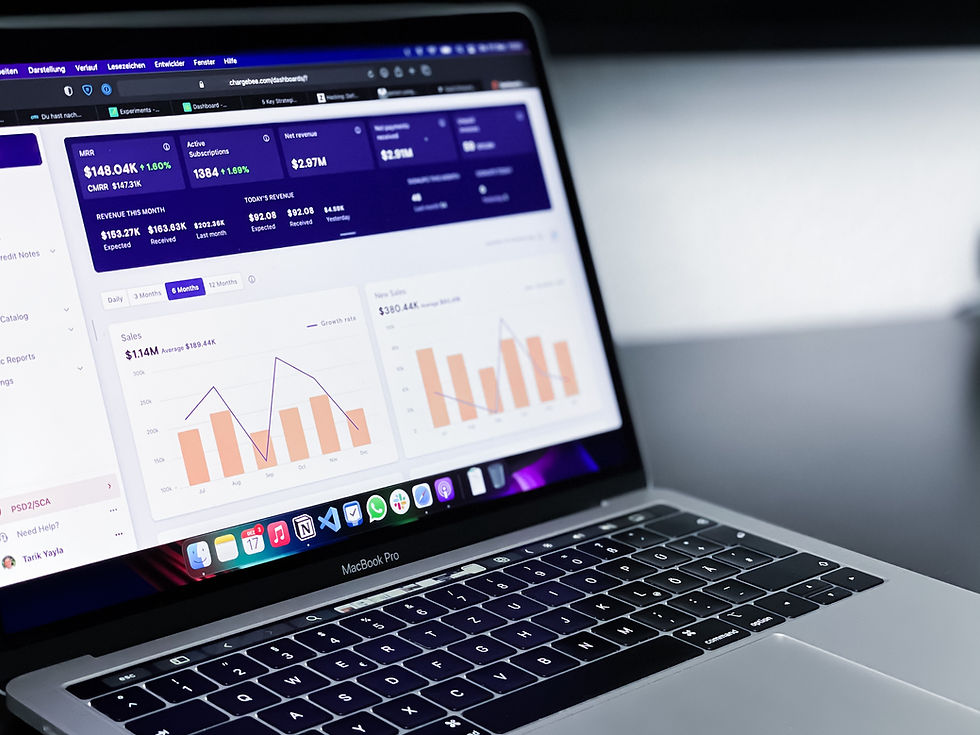Revenue Retention Analysis: The Key to Unlocking Growth and Improvement Opportunities
- Travis Hall
- May 11, 2023
- 2 min read

In today's competitive business landscape, retaining customers and generating recurring revenue is a critical component of a company's long-term success. Subscription-based businesses, in particular, must prioritize customer satisfaction and identify areas for improvement to ensure ongoing growth. One valuable tool for achieving these goals is revenue retention analysis. By examining revenue patterns and customer behavior, businesses can identify opportunities for growth and improvement.
In this article, we'll discuss the importance of revenue retention analysis and provide a step-by-step guide to implementing it in your business.
Why Revenue Retention Analysis Matters
Revenue retention analysis enables companies to understand how well they are retaining customers and generating recurring revenue. It is a powerful tool for identifying trends, uncovering potential issues, and highlighting areas for improvement. By analyzing revenue retention, businesses can:
1. Identify high-value customer segments that contribute to long-term revenue.
2. Develop targeted strategies to improve customer retention and revenue growth.
3. Allocate resources more effectively based on revenue trends and customer behavior.
4. Monitor the impact of retention initiatives and adjust strategies as needed.
How to Conduct a Revenue Retention Analysis
Step 1: Collect Data
The first step in revenue retention analysis is to gather data on your customers and their interactions with your business. This can include transaction data, subscription details, customer demographics, and more. Be sure to collect data sufficiently to identify trends and patterns.
Step 2: Calculate Key Metrics
Next, calculate the key revenue retention metrics for your business. These may include:
- Gross Revenue Retention (GRR): The percentage of revenue retained from a specific cohort of customers over a given period.
- Net Revenue Retention (NRR): The percentage of revenue retained from a specific cohort of customers over a given period, accounting for upsells, downgrades, and churn.
- Average Revenue Per User (ARPU): The average amount of revenue generated per customer.
- Customer Lifetime Value (CLV): The total revenue a customer is expected to generate during their relationship with your business.
Step 3: Segment Your Customers
Divide your customers into different groups based on demographics, spending habits, or product usage. This will allow you to identify high-value customer segments and focus your retention efforts accordingly.
Step 4: Analyze Trends and Identify Opportunities
Examine your revenue retention metrics trends across different customer segments and time periods. Look for patterns that indicate areas for improvement or potential growth opportunities. For example, you may find that a specific customer segment has a lower-than-average retention rate, suggesting a need for targeted initiatives to improve their satisfaction and loyalty.
Step 5: Develop and Implement Retention Strategies
Develop targeted strategies to improve customer retention and revenue growth based on your analysis. This may include improving your onboarding process, offering personalized promotions, or enhancing customer support. Continuously monitor the impact of these initiatives and adjust your strategies as needed.
Revenue retention analysis is a powerful tool for subscription-based businesses seeking to optimize their growth and improve customer satisfaction. By collecting data, calculating key metrics, segmenting customers, and analyzing trends, companies can unlock valuable insights and develop targeted strategies to maximize revenue retention.



